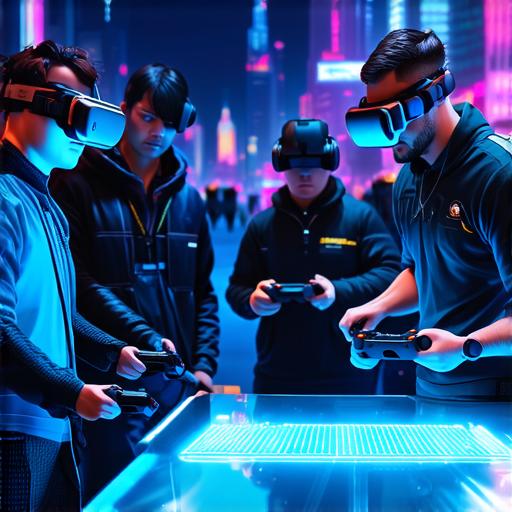Introduction
The concept of the metaverse is rapidly gaining traction and becoming increasingly popular. A virtual world where people can interact with each other in a digital space, the metaverse has the potential to revolutionize how we live, work, and play. However, constructing a metaverse is not an easy task, and it requires careful planning and execution.
1. Define Your Vision for the Metaverse
The first step in constructing a metaverse is to define your vision for it. What do you want the metaverse to be like? Who will be able to access it, and what kind of experiences will they have? These are important questions that need to be answered before you start building the metaverse.
Case Study: Decentraland
Decentraland is a popular virtual world that was built using blockchain technology. The platform allows users to create their own avatars and explore a vast digital landscape filled with interactive experiences and games. Decentraland’s success can be attributed to its clear vision and focus on user experience.
2. Choose Your Platform
Once you have defined your vision for the metaverse, the next step is to choose your platform. There are many platforms available that can help you build a metaverse, including Unity, Unreal Engine, and WebGL. Each platform has its own strengths and weaknesses, so it’s important to choose one that fits your needs.
Case Study: VRChat
VRChat is another popular virtual world that was built using blockchain technology. The platform allows users to create their own avatars and explore a vast digital landscape filled with interactive experiences and games. VRChat’s success can be attributed to its choice of platform, which allowed it to offer a unique and immersive experience.

3. Build Your World
Now that you have chosen your platform, it’s time to start building your world. This involves creating the landscape, designing buildings and objects, and programming interactive experiences. It’s important to keep in mind that building a metaverse is a complex process, and it requires a team of skilled professionals.
Case Study: The Sandbox
The Sandbox is a popular virtual world that allows users to create their own games and experiences using a variety of tools and assets. The platform has a large community of developers and creators who contribute to its content, making it a great example of how a metaverse can be built collaboratively.
4. Secure Your Metaverse
Security is a critical aspect of building a metaverse. You need to ensure that your world is secure from hackers and other malicious actors who could cause harm to your users or their data. This involves implementing strong authentication and encryption protocols, as well as regularly monitoring your network for any suspicious activity.
Case Study: Fortnite
Fortnite is a popular battle royale game that has been successful in part due to its focus on security. The game uses strong encryption protocols to protect user data, and it regularly updates its security measures to stay ahead of potential threats.
5. Monetize Your Metaverse
Finally, you need to monetize your metaverse. This involves finding ways to generate revenue from your users, such as by selling virtual goods or advertising space. It’s important to keep in mind that monetizing a metaverse can be challenging, and it requires careful planning and execution.
Case Study: Second Life
<p
